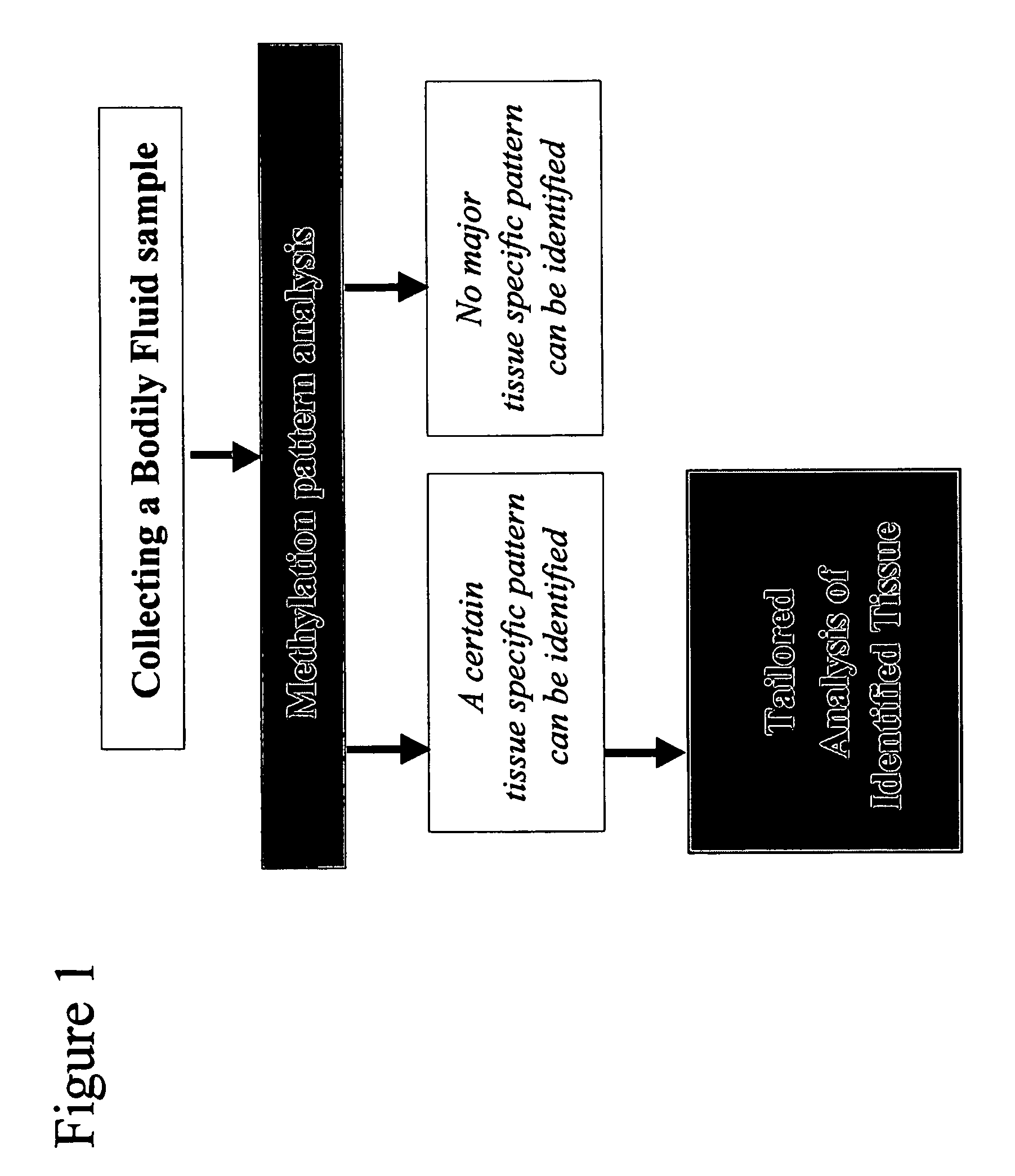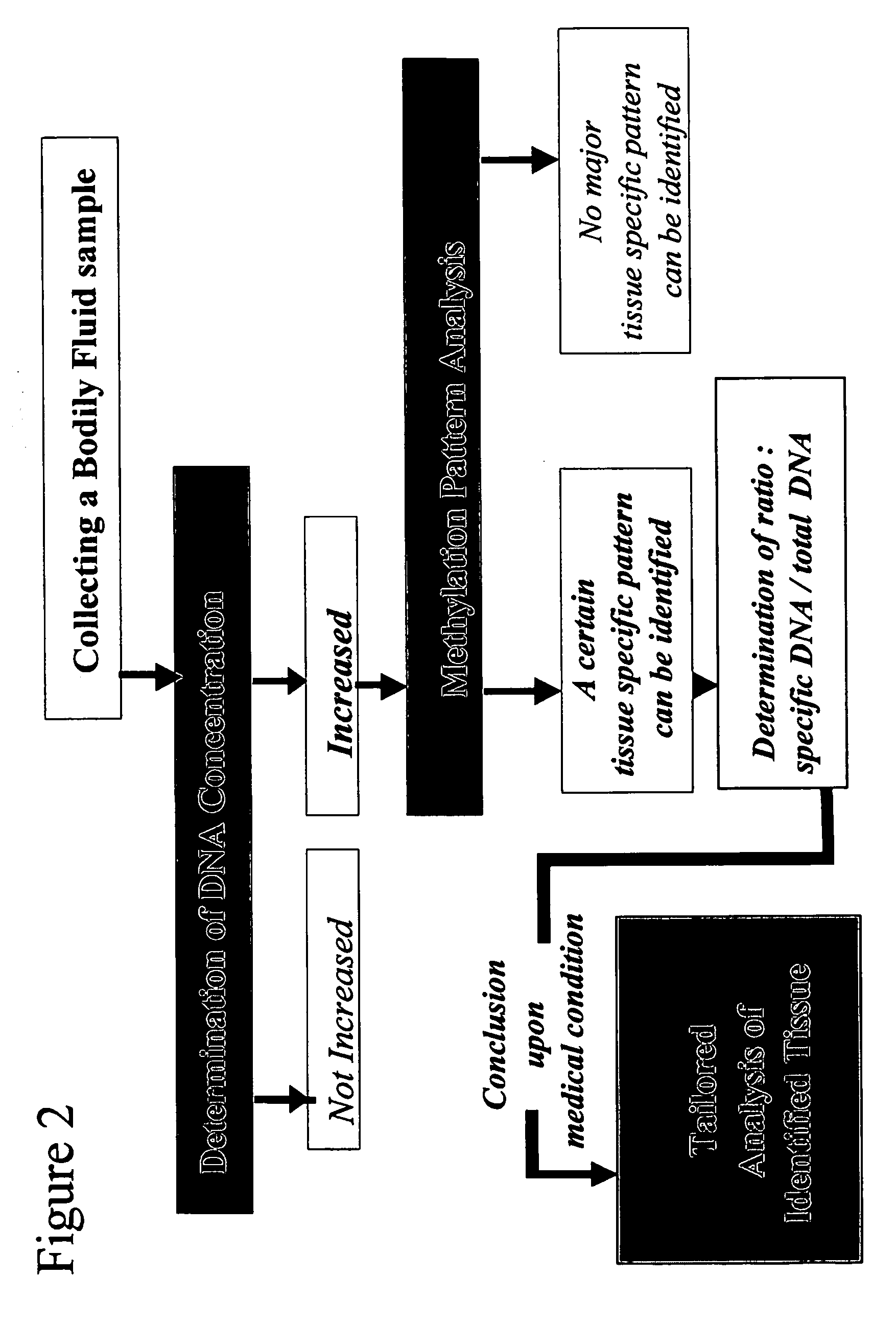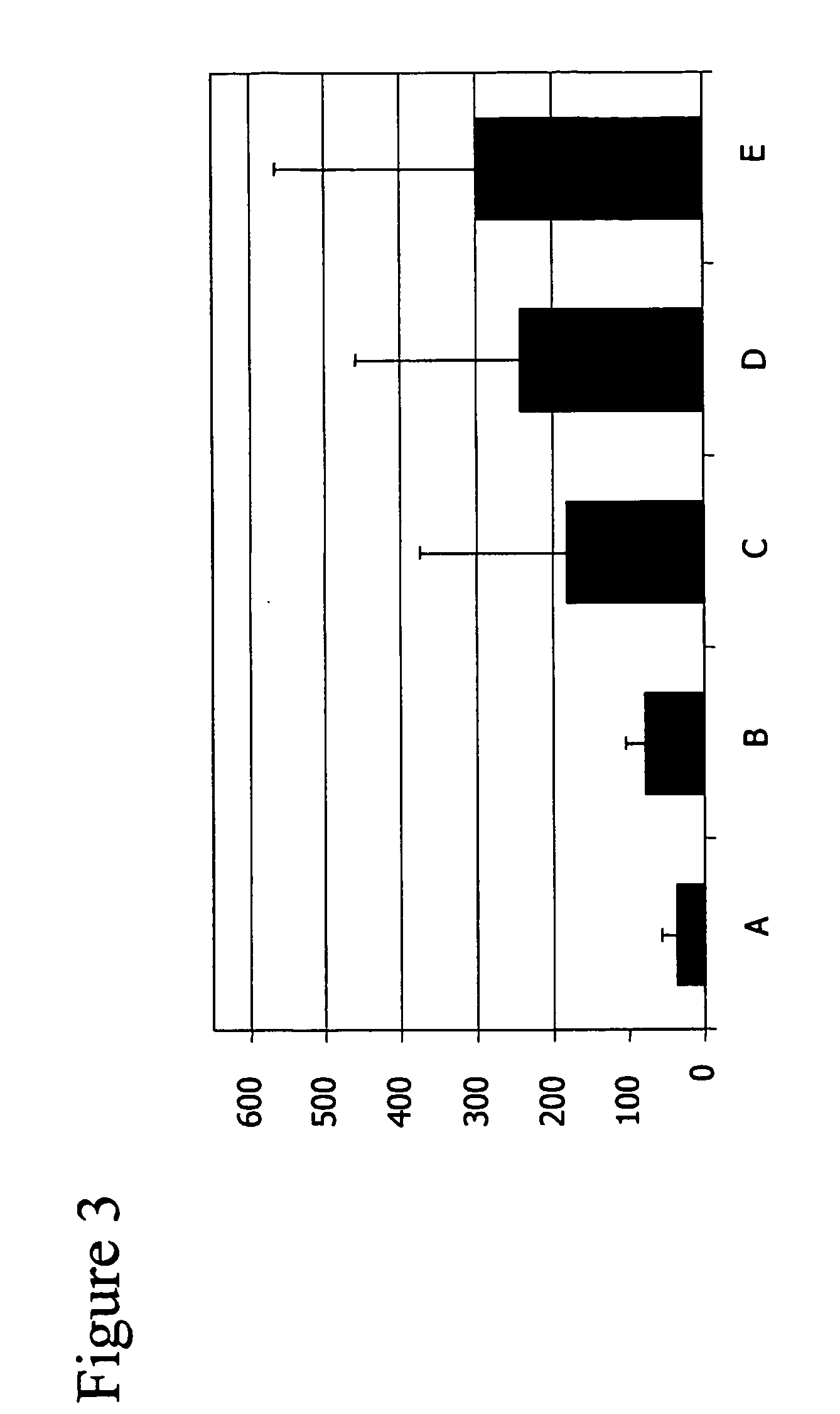Method and device for determination of tissue specificity of free floating dna in bodily fluids
a tissue specificity and nucleic acid technology, applied in the field of methods for detecting free floating nucleic acids, can solve the problems of lack of sensitivity, unsatisfactory methods, and difficult reproducibility of studies, and achieve the effect of dramatic increase in the diagnostic value of such an assay
- Summary
- Abstract
- Description
- Claims
- Application Information
AI Technical Summary
Benefits of technology
Problems solved by technology
Method used
Image
Examples
example 1
Organ Specific Methylation Pattern Analysis on Plasma Samples
[0211] A blood sample was taken from a patient who was unaware that he had been exposed to high levels of radiation during his years of service at the army. Now he wishes to know whether he has developed a neoplastic disease like a tumour. His physician has not yet found any typical symptoms other than the patient complaining about unspecific pain at different organs, including headache.
[0212] A 20 ml blood sample was collected in heparin. Plasma and lymphocytes were separated by Ficoll gradient. Control lymphocyte and plasma DNA were purified on Qiagen columns (Qiamp Blood Kit, Qiagen, Basel, Switzerland) according to the “blood and body fluid protocol”. Plasma was passed on the same column. After purification of about 10 ml of plasma 350 ng of DNA were obtained. The DNA was subjected to a sodium bisulfite treatment as it has been described in Olek A, Oswald J, Walter J. (1996) A modified and improved method for bisulp...
example 2
Organ Specific Methylation Pattern Analysis on Serum Samples
[0213] A blood sample was taken from a patient, who wishes to know whether he has developed a neoplastic disease like a tumour. His physician has not yet found any typical symptoms other than the patient complaining about randomly occurring unspecific pain in his stomach, recurrent headache and pain in his kidneys.
[0214] A serum sample has been taken from the patient. DNA has been isolated from the serum with the use of the Qiamp kit and has been bisulfite treated as described in Example 1.
[0215] A typical methylation pattern could be determined analysing the methylation statuses of a higher number of different informative CpG sites, that were used as markers for different tissues and organs, simultaneously. That was done by first amplifying the relevant fragments with the use of specific primers designed as to only specifically amplify those fragments of the bisulfite treated DNA that contain informative CpG positions....
example 3
[0224] In another case the physician was following a different strategy. He was first testing for the total amount of free floating DNA in said patient's serum, because this test is less cost intense and was covered by the patient's insurance. The blood sample was sent to a laboratory. After having separated the plasma from blood cells by centrifugation at 3000 g for 20 min the DNA from the blood plasma was extracted using the QIAamp Blood Kit (Qiagen, Hilden, Germany) using the blood and body fluid protocol referring to Wong et al. (1999), Cancer Res 59: 71-73 and Lo et al. (1998) Am. J. Genet. 62: 768-775. It was determined that the level of total free floating nucleic acids in said serum sample was 20 times higher than it usually is in samples from healthy donors, that are not suffering from cell proliferative diseases. The data that were establishing this “normal” value have been obtained in previous studies based on a high number of samples and were approved by the regulatory a...
PUM
| Property | Measurement | Unit |
|---|---|---|
| Temperature | aaaaa | aaaaa |
| Concentration | aaaaa | aaaaa |
| Fluorescence | aaaaa | aaaaa |
Abstract
Description
Claims
Application Information
 Login to View More
Login to View More - R&D
- Intellectual Property
- Life Sciences
- Materials
- Tech Scout
- Unparalleled Data Quality
- Higher Quality Content
- 60% Fewer Hallucinations
Browse by: Latest US Patents, China's latest patents, Technical Efficacy Thesaurus, Application Domain, Technology Topic, Popular Technical Reports.
© 2025 PatSnap. All rights reserved.Legal|Privacy policy|Modern Slavery Act Transparency Statement|Sitemap|About US| Contact US: help@patsnap.com



